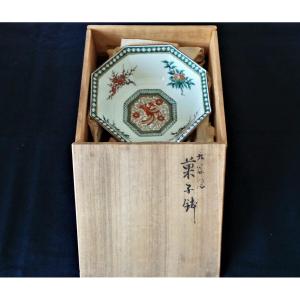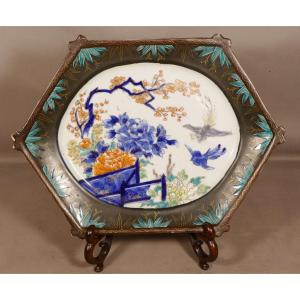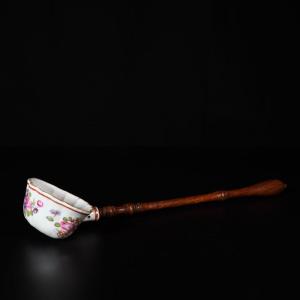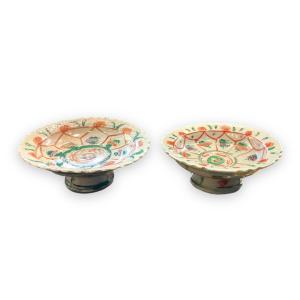The painting technique used in Kyoto’s Satsuma-style ware was developed by Kinkōzan family.Sōbei IV Kinkōzan Sōbei lV Kyoto’s Satsuma-style (1824–1884), was the sixth generation of a family of Kyoto Awataguchi potters with the name Koboyashi. In the 18th century the third Koboyashi was granted by the Shogun to bear the name Kinkozan. Sobei IV was appointed as the official potter for the Tokugawa shogunate and his kiln flourished in those years. But as a result of the Meiji restoration, he lost important clients such as the shogun, daimyo and other nobles who lost their former position or moved to the new capital Edo. To find new customers, he established trade relationships with foreign exporters who lived in Kobe and invested in refining the painting method for pottery and decoration, which ultimately resulted in "Kyo-Satsuma" ware, characterized by delicate, sometimes breathtaking detailed brushwork in multicolored glazes and gold on a crackled ivory white earthenware body. After the death of Kinkozan Sobei IV, the studio was passed on to his son Kinkōzan Sōbei V (1868-1927), who further developed the Kyō Satsuma techniques and succeeded in becoming the largest producer of Satsuma ware of that time but also a producer of some of the best quality Satsuma items. At the 1893 Colombian exhibition in Chicago, Kinkozan Sobei V, was impressed by the new techniques and stylish innovations on Western ceramics. He decided to invest in research and experiments, hired Western scientists to set up new techniques and experiments with materials and employed some of the best artists for new designs and decorations, influenced by the Art Nouveau and later Art Deco movement. He experimented with monochromes and other new types of decoration on both porcelain and earthenware, and tried out all possible styles, from large palace vases suitable for the old Victorian houses, to miniature items, real gems of only 6 cm high. Some of his best objects were made in the late Meiji and Taisho period. A very high quality object can sometimes take months to realize, and for most of the kilns, studio’s or factories this was no longer a realistic option in a market that was subject to the changing taste of customers and strong competition from hundreds of smaller and larger factories and studios.. The Kinkozan studio closed in 1932 (after the death of Kinkozan VII in 1927).
Dimensions: height 8cm, width 8cm, depth 7 cm.
Condition: minimal loss of enamel on the bases of the legs, where it was in contact with the surface and a small loss of gilding on the finial on the lid. Otherwise excellent antique condition.
Please study the accompanying photographs carefully as they form an integral part of this description. The item will be shipped with full tracking and insurance. It is important to note that shipping costs include labour, packaging and postage.


















































 Le Magazine de PROANTIC
Le Magazine de PROANTIC TRÉSORS Magazine
TRÉSORS Magazine Rivista Artiquariato
Rivista Artiquariato